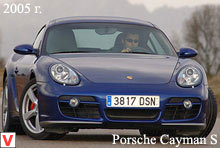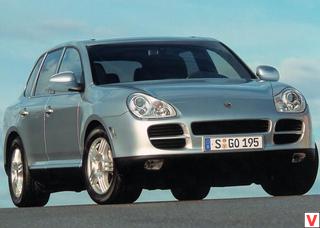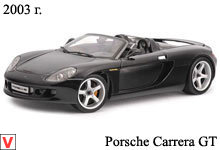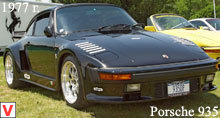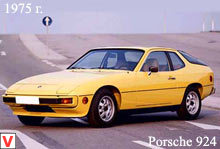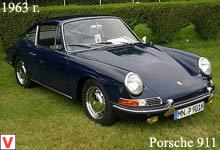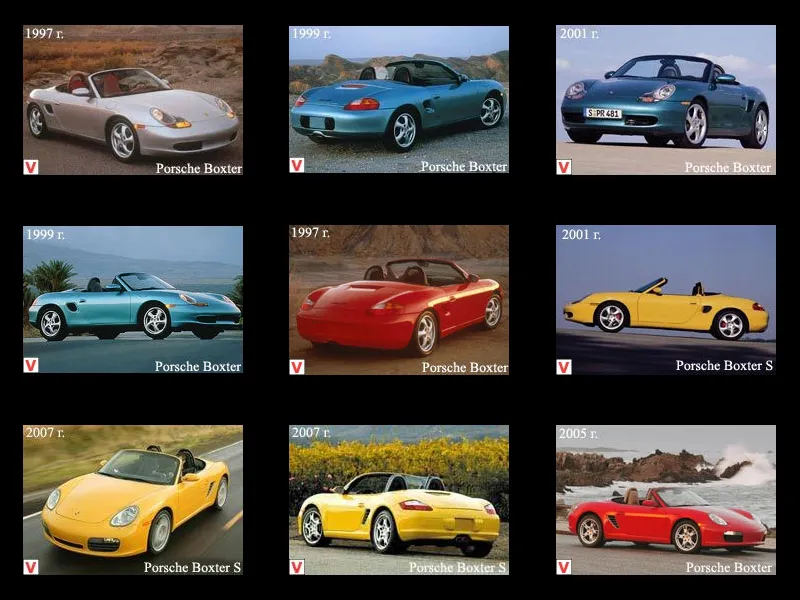
Since its debut in 1996, the Porsche Boxter has been produced in a single body variant, the soft-top roadster. And only as an additional equipment to it was sold a rigid removable roof - a hardtop. The appearance of the Boxter was created with an eye on the successful model of the 50s.
last century 550 spyder. Under the hood, the Boxter of the first years of production was an opposed "six" with a working volume of 2.5 liters and a power of 204 hp, which in 1999 was replaced by a more powerful engine of 2.7 liters / 228 hp. At the same time, the “hot” version of the Boxster S with a 3.2 l / 260 hp engine appeared. In the fall of 2004, the model was updated.
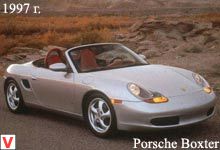
Familiar to all the appearance of this car has not lost. The appearance of the original Boxter turned out so attractive that the improvements were made only in detail. The body rang out in width, the wheel arches and air intakes on the rear fenders increased markedly.
Bumper and lighting also slightly changed shape. All this has brought even more elegance and at the same time aggression into the look of the roadster. The main external difference from the previous Boxter is oval headlamps with integrated turn signals instead of boomerang-shaped headlights in which all front lighting equipment was assembled under a common cap.
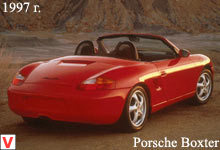
Now, fog lights and turn signal repeaters have taken more familiar places in the front bumper. Among other changes to the exterior - new bumpers, increased track, 18-inch wheels and more expressive rear wings with enlarged air intakes of the engine cooling system. But in general - the same proportions, the same silhouette.
The new Boxster is one of the safest cars in the class. Serially began to install airbags to protect the head. With a side impact, they automatically “shoot” from a special module under the side window, thereby complementing the standard side “curtains” in the back of the seats.
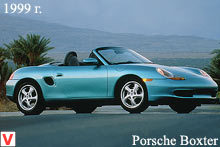
The base Boxter and the hotter Boxter S hit the market at the same time. The first is driven by an opposed engine with a displacement of 2.7 liters, which develops 240 horsepower (12 horsepower more than its predecessor). Such a car with a five-speed "mechanics" is gaining the first "hundred" in 6.2 seconds and reaches 256 km / h.
Boxter S is equipped with a 3.2-liter unit producing 280 horsepower (+ 20 horsepower), interlocked with a six-speed manual. Acceleration from standstill to 100 km / h in a more powerful roadster takes 5.5 seconds, the maximum speed - 268 km / h. As an alternative to mechanical boxes, a five-speed Tiptronic “automatic” with manual shift mode is offered. Porsche engineers conducted a substantial revision of the old engine. It consists in optimizing the operation of all systems.
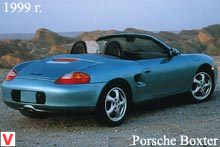
In particular, a new power supply system with two air dampers between the cylinder heads was used. When closed below 3500 rpm, they close - the 6-cylinder unit works like a 3-cylinder unit, which contributes to a better realization of the torque. And only with 5500 rpm engine thrust is transferred to full power. By the way, the marginal level of emissions of harmful substances easily fit into the modern standard Euro 4, and fuel consumption with increased power was reduced from 10.6 to 10.4 liters. The power unit is located in the depths of the car, which gives the Boxter additional balance and stability, as well as more space for luggage in front and behind.
The most capacious luggage compartment of 150 liters is located in front. There is still a luggage compartment - 130 liters - in the back. The covers of both compartments are opened by a command from the key fob or by using the buttons on the threshold from the driver’s side. Plus the ability to scatter all sorts of small objects - there is a fairly roomy glove compartment, under the armrests of the doors there are niches, grooves in the rapids and a compact box between the driver and the passenger. Designers managed to achieve a lower coefficient of aerodynamic drag of the body.
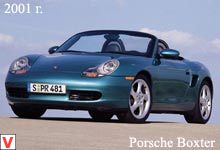
At Boxter S, this figure was reduced from 0.32 to 0.30, which is particularly commendable if we take into account the more rigid body. In the standard model, this indicator is even better - 0.29. First of all, the bottom was thoroughly worked out for organizing a better flow of air under it. The goal is to minimize lift at high speeds. Plus, at the right moment, a small spoiler comes out of the stern, providing additional downforce.
Inside, the changes are more dramatic. Fully renovated interior looks strictly and modern. Perhaps the most important change in the interior are completely new seats, the backs of which no longer seem so narrow as before. Developed lateral support, adjustable steering wheel in two planes (height adjustment appeared) - it will not be difficult for most drivers to find a comfortable posture. Ergonomics thought out to the smallest detail.
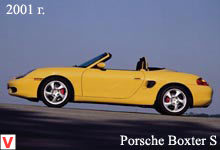
The driver does not distract from the management. The position of the arrow on a huge tachometer in the center of the instrument panel can be “caught” even with peripheral vision. The small speedometer on the left, marked up to 280 km / h and with notches in 10 km / h increments here, rather, for beauty. The speed at a particular moment is perfectly informed by large numbers on the screen occupying the lower part of the tachometer. It also displays the testimony of the onboard computer, including the navigation system. The Boxster is easy to turn into a convertible.
To do this, you first need to pull the lever above the rearview mirror, and only then press the button of the soft-top electric drive - after 12 seconds you will find yourself in the open air. It is noteworthy that the gas cap is located in the right front fender, and the ignition lock is to the left of the steering column. With the debut of the Boxster 2004 Stuttgart engineers managed to make another breakthrough.
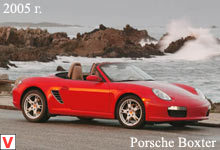
An extended track, a completely redesigned undercarriage, as well as a rack and pinion steering with a variable gear ratio — with an increase in the intensity of rotation, the more steering deviations, the reactions become sharper, they could not contribute to achieving the best result. For surcharge, “active” PASM (Porsche Active Suspension Management) shock absorbers are offered, changing their resistance depending on traffic conditions. The result of the efforts made is obvious: in the corners, Boxter strictly adheres to a given trajectory. The car responds precisely to the slightest deviations of the steering wheel, flooding all the trump cards of the neutral overall tuning mechanism.
The reserve potential of the chassis is so high that now the serially installed stabilization system ESP (Porsche calls it PSM in its own way, which stands for Porsche Stability Management) only occasionally has a serious reason for intervention. To top it off, the level of ride comfort was also much higher - at least when the Boxter is equipped with a PASM. In normal operation, the suspension gently works out the relief of the canvas.
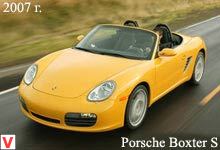
Optionally, a “sport-chrono-package” is installed: a stopwatch that allows you to measure lap times on a sports track, as well as to compare the results (they are stored in the computer’s memory), ESP and traction control system. Cabriolets Porsche Boxter and Boxter S 2007 model year received more power and torque, as well as an updated Tiptronic transmission, according to the German automaker. With the new variable valve timing system, the VarioCam Plus Boxter has become more powerful by 5 horsepower, bringing their total score to 245, and torque has increased from 269.8 to 272.5 Nm.
With a five-speed manual gearbox, the Boxter fires up to 100 km / h in 5.8 seconds, and its top speed is 257.5 km / h. The six-speed automatic increases the speed ceiling to 260.7 km / h. On the Boxter S, the engine capacity increased from 3.2 to 3.4 liters, and the power grew by 15 hp. - up to 295 hp Torque is 340 Nm. Boxter S accelerates to "hundreds" in 5.1 seconds and reaches a top speed of 272 km / h. The tire pressure sensor and Sport Chrono sports body kit complete the update package. The Boxster is a sleek, fast, truly sporty “selfish” car that allows for everyday use.
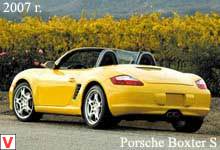
This Porsche.
